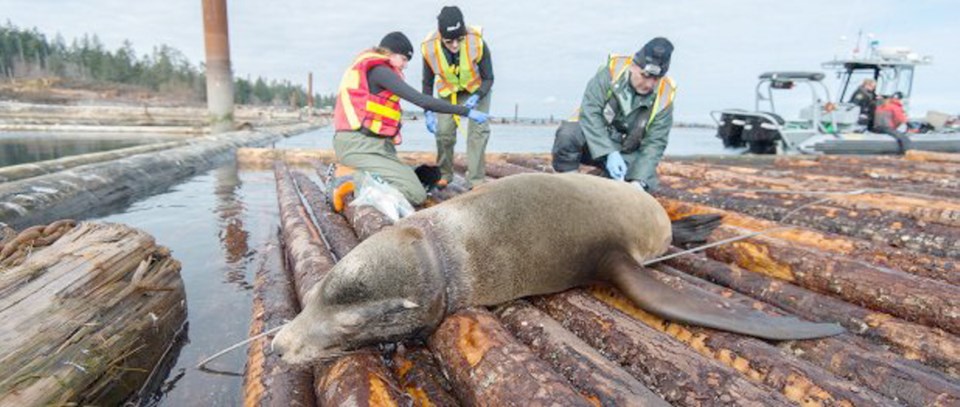Deadly debris such as plastic packing bands and fishing gear are exacting a gruesome toll on sea lions on B.C.’s West Coast, including Pacific Rim National Park Reserve, a Vancouver Aquarium research associate warns.
“Most of the debris is around the neck,” Wendy Szaniszlo told a weekend marine mammal symposium at the University of B.C. “If it’s a younger animal, it’s going to grow into it, which probably won’t end well.”
A total of 558 entanglements of Steller and California sea lions has been recorded within Pacific Rim waters, mainly Barkley Sound, from 2005 to 2012. Allowing for duplicate sightings during surveys, the number probably represents about 300 individual animals, she said.
Extrapolating those figures across the entire B.C. coast, Szaniszlo said it’s not unreasonable to think about 100 sea lions die annually due to entanglements.
About 30 per cent of cases observed at Pacific Rim involved plastic packing bands. “Basically, any large box secured for transport will have them,” Szaniszlo said.
Another 15 per cent of entanglements involved commercial and sport fishing gear, three per cent involved rubber bands from crab traps, and the rest were so badly embedded in the animal that the type of debris could not be identified.
“The insidious thing is that they don’t die right away, there is suffering involved,” she said in a later interview. Alaskan research suggests that animals that swallow fishing gear are likely to die, including from internal bleeding.
This year, six sea lions were successfully disentangled on the B.C. coast, five of which were later observed to be alive through identification of flipper tags.
The animals are darted on land at haulouts used by the animals. But it takes 12 minutes for the drug to take effect, Szaniszlo explained. So if the sea lion goes into the water and is at risk of drowning, rescuers secure the animal alongside a boat while the debris is removed.
“Prevention is the big thing,” she said, calling on people to cut packing bands before they dispose of them to ensure they don’t pose a threat to marine life. “It’s just a snip.”
She said conservation and industry groups are working to come up with biodegradable packaging bands that will fall off marine life.
Sheena Majewski, a researcher at the federal Pacific Biological Station, told the symposium that the population of Steller sea lions continues to grow in B.C. The species is listed as special concern in Canada but is endangered in Alaska.
A 2013 survey showed 6,089 pups and 22,300 non-pups, representing annual average increases of 4.6 per cent and 3.7 per cent, respectively, since 1971. Two new breeding sites (more than 50 pups) have been confirmed at Gosling Rocks west of Bella Bella and Bonilla Island on the north coast. Warrior Rocks, also on the north coast, is expected to officially become a colony soon. The world’s largest Steller sea lion breeding colony is Triangle Island, off the northern tip of Vancouver Island, with 3,985 pups in 2013.


